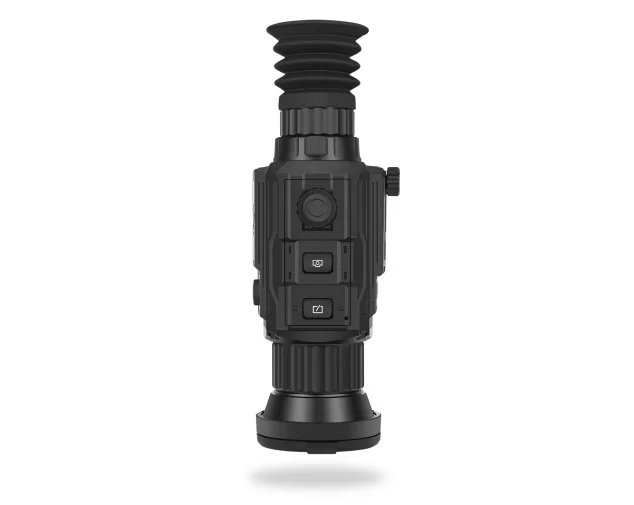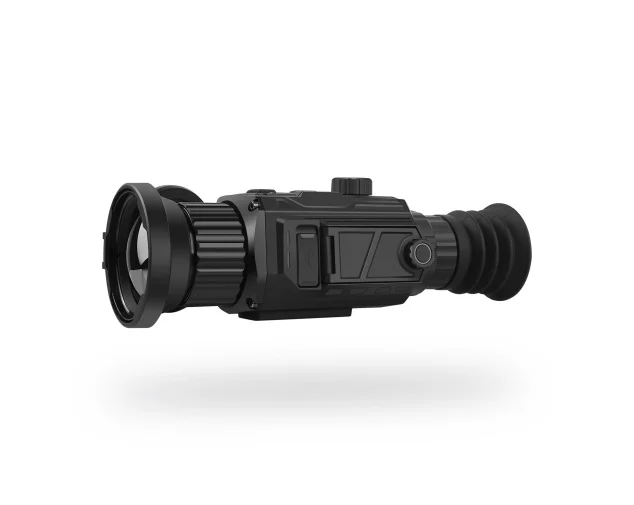How to Choose the Perfect Thermal Clip-On Scope foThermal Clip-On Scope Your Hunt?

Introduction
Yubeen makes thermal optics that seem made by hunters, for hunters. They feel tough. They work easy. And they pack in tech that does more than you expect. Picture European accuracy mixed with American smarts. Sensors slice through fog like butter. Frames take recoil from your biggest calibers without a flinch. Batteries hold up through long walks in the wild. I have tried their stuff on all kinds of hunts. From roe deer chases to wild boar waits. It always steps up when you need it most. What makes them special? They focus on how things work in the real world. No fancy tricks. Just gear that stretches your shooting distance. And it helps you hit more often. If you care about fair and smart hunts, their products should join your gear. Check out their site. You will get why experts talk about it around the fire.
Now, let’s get back to the excitement. A thermal clip-on scope adds heat-based pictures right over your current scope. So you can find game up to 1,000 meters away in total dark. No more guessing at shadows. Or waiting for moon glow. But how do you pick the best one? That trips up a lot of folks. You want clear views for sure ID. Smooth follows for quick shots. And strength to handle the rough stuff. In this guide, we will go through it one step at a time. We focus on what counts for your next trip out. By the time you finish, you will know how to choose a model that suits your way. Whether you wait and watch. Or go after fast movers. Let’s get ready. And hunt in a smarter way.
What Are Thermal Clip-On Scopes?
You already have a top-notch daytime scope. And it is zeroed just right for your rifle. So why change that? Here comes the thermal clip-on scope. It is a small add-on that fits in front of your main optic. It throws thermal pictures straight into what you see. It picks up infrared heat from animals. That turns chilly nights into spots full of targets. You see a deer’s warm shape against the cool dirt. Even through leaves or light bushes.
This setup works great for all kinds of uses. You clip it on for dark hunts. Then take it off for sunny days. No need to zero again. It adds less weight than a whole thermal riflescope. And it costs less too. Because you use what you own. For you, the hunter who walks miles on foot, this means a lighter bag. And more time to focus on the chase.
Folks who hunt love how it links day and night without a hitch. Think about it. You shift from a bright afternoon look-around to an evening move. All without stopping to tweak. That is the real plus. You take fair shots on game you spot clearly. Every single time. As we head into the choice points, keep this base in mind. Your clip-on has to help your hunt. Not make it harder.
Key Factors to Consider When Choosing a Thermal Clip-On Scope
Picking the right thermal clip-on comes down to features that fit what you need in the hunt. Begin with picture sharpness. Then add in how it acts under stress. Each part links to the next. So your tool gives what you want when the rush comes.
Resolution and Image Clarity
Clear pictures make or break it. You spot horns at 300 yards. Or you mix up a rock for a fox. Aim for at least 384 × 288 pixel setup. That pulls out small bits from heat shapes. So you check the type of animal. And place your shot right and fair. Weaker setups fuzz the lines. They push you closer. And that scares off the prey.
Good setup works with solid heat pick-up. It shows small changes. Like a coyote’s edge in high grass. You feel sure in changing light. And you cut down on lost chances. Now, think about how that clear view stays when things move.
Frame Rate for Smooth Tracking
A 50 Hz update speed keeps pictures smooth as targets run. Slow ones—from cheap gear—make a side shot a wild guess. But with 50 Hz, you follow rabbits or pigs without shake. It matches the speed of real action.
This even flow boosts your reach. You trail heat paths through thick spots. And tweak your aim quick. Link this to pick-up strength. A quick sensor makes it better. It grabs weak signs before they go.
Pixel Pitch and Sensitivity
Go for a 12 μm pixel gap. It makes the sensor smaller. But it ups the heat catch. Perfect for small clip-ons that do not throw off your rifle balance. Tight gaps boost contrast. So you tell a young deer from its mom at evening.
Pick-up shines here. It grabs body heat as small as 0.05°C shifts. In cold times, this finds hidden animals tucked in bushes. Strength comes next. Your scope needs to take the wild without quit.
Battery Life and Durability
Look for 5 or more hours per charge. Changing power in the middle of a wait ruins it. Lithium cells with fast-swap spots keep you going. They power full-night sits.
Make matters too. Aluminum shells with IP67 water-proof and 1,000G shock hold mean they take .308 bangs and hard rain. You need stuff that ignores mud and ice. Ready for the next light. Easy fit wraps it up.
Mounting Compatibility and Ease of Use
Fast-snap Picatinny holders work on most rifles. No tools needed. Tune rings line up the thermal sight just right with your optic. They keep zero in seconds.
Simple buttons for zoom and color shifts let you change on the go. You switch white-hot or black-hot to cut shine. All while staying hidden. These parts come together in top models. They blend them just right.
Why the ET50 Stands Out as the Perfect Choice

You have looked at the must-haves. Now picture them all in one strong piece. The ET50 hits every point. It comes out as your pick for hunts that call for exact work and toughness.
Its 384 × 288 setup gives super clear heat views. You spot key spots on a pig at 400 yards. With a 50 Hz speed, moves look real. You lead that quick bunny without pause. The 12 μm pixel gap sharpens pick-up. It shows paths in wet fields. Where others fade.
That 8~14 μm band grabs long-wave heat easy. It does well in rain or mist. Times that stop weaker ones. You go farther in bad weather. And turn rough days into wins. Power lasts 6 hours. The tough magnesium body takes 800G hits and deep water.
At just 450 grams, it hardly adds weight to your rig. Great for long trips. The fast-off mount clicks on 30mm or 40mm fronts. It lines up in less than a minute. Hunters talk up its color choices. Seven ways tune sights for fur or birds. They cut eye tiredness on long looks.
In real hunts, this means more wins. A guide I know got a big elk at fade light. He thanked the add-on’s smooth mix with his Leupold. Fair, good, and out of the way. The ET50 lifts your hunt without noise. If clear and quick top your wants, it fills them all. That is why the best grab it first.
Practical Tips for Maximizing Your Thermal Clip-On Scope in the Field
Stuff like this grows with good habits. Build on your pick by learning setup and moves. Turn what could be into what you do best.
Kick off with putting it on. Lock the holder to your rail. Then put the clip-on’s front on your scope’s end. Use the small knobs to match pictures just right. No side shift means shots go straight. Try at 100 yards on a warm mark to check zero. Tweak once. Hunt on.
Out in the open, look steady. Sweep wide views in 30-degree turns. Stop at hot spots. Flip to red-hot for blood tracks. Or green for dim nights. Mix with the land. Side hills at first light when warm air lifts. Use the sight to cut valleys.
For fast chases, do practice runs. Lift your rifle. Follow a friend’s heat through bushes. This sets your moves for live times. In pest hunts, zoom to 4x for clean shots. Then back out for runners.
Care keeps it good. Clean fronts with soft cloth after dusty days. Keep in a dry sack to stop wet build-up. Charge full before goes. Check seals each year. These steps make it last. So your spend gives back over seasons.
One key point on fair play. Always check what you see. Heat finds life. But clear setup proves it is okay game. Not a house pet or person. This care keeps our hunts going. With these ideas, your clip-on feels like part of you. It boosts your gut into real hits.
Conclusion
Picking the best thermal clip-on scope hones your skill out there. Put first clear for sight. Speeds for easy flow. And frames that last. Parts that meet in gear like the ET50 for hunts you end well. You have the plan now. Check your needs. Match the parts. Add practice. What you get? More days out. Less what-ifs. And tales to share.
Set to step up? Our crew gives fit help. Long covers. And hunt tweaks just for you. Send a note to the website. We will set your gear right today.
FAQ
Q: How far can a thermal clip-on scope detect game reliably?
A: Most good models find heat signs up to 1,000 meters. But sure checks drop at 400-500 yards. Things like size and weather count. Test yours on home ground for your marks.
Q: Will a thermal clip-on work with my existing variable scope?
A: Yes. If the front size fits. 30-50mm works for most. The add shows on your zoom. So go big for close looks. Without losing heat feed.
Q: Can I use a thermal clip-on in rainy conditions?
A: Sure. If it has IP67 rate. Water rolls off. The band cuts mist. Great for wet times. But big rains might blur far sights a bit.
